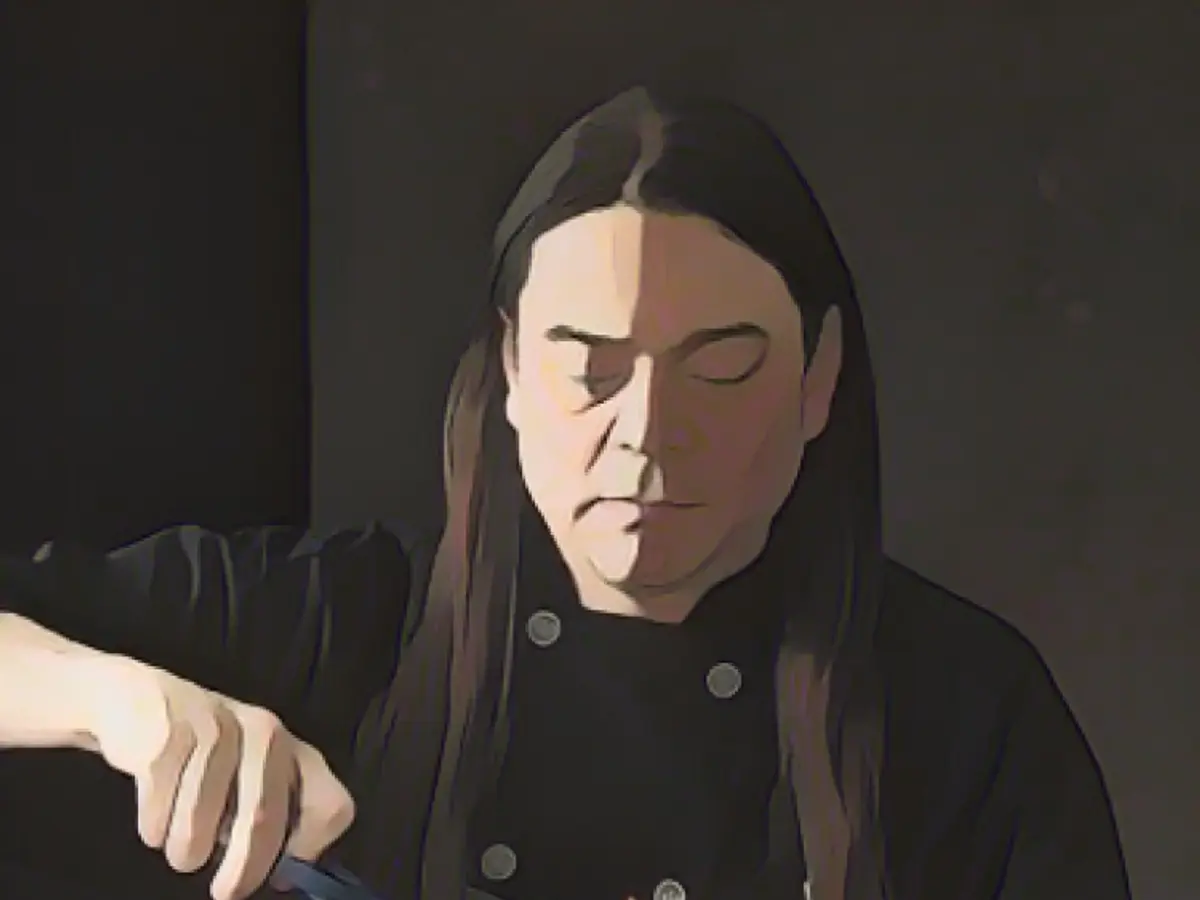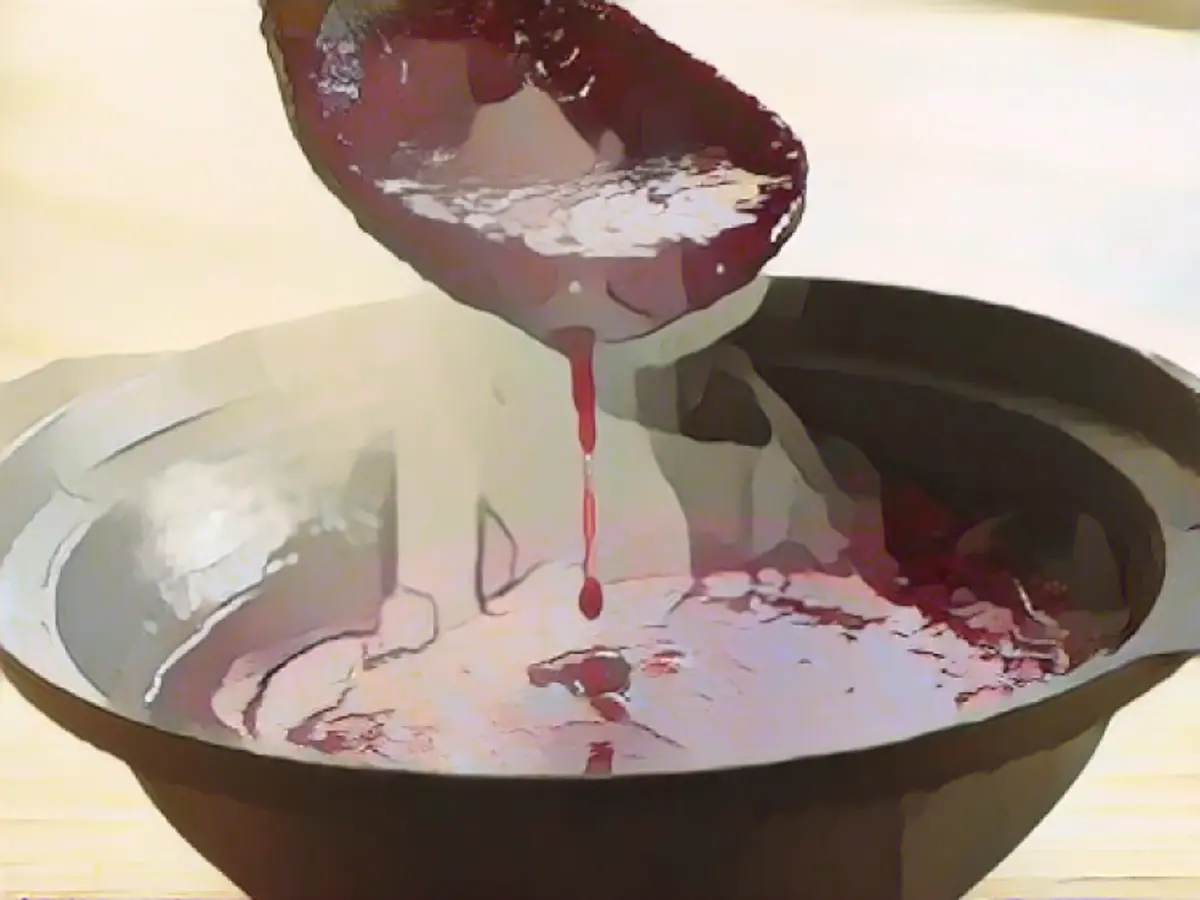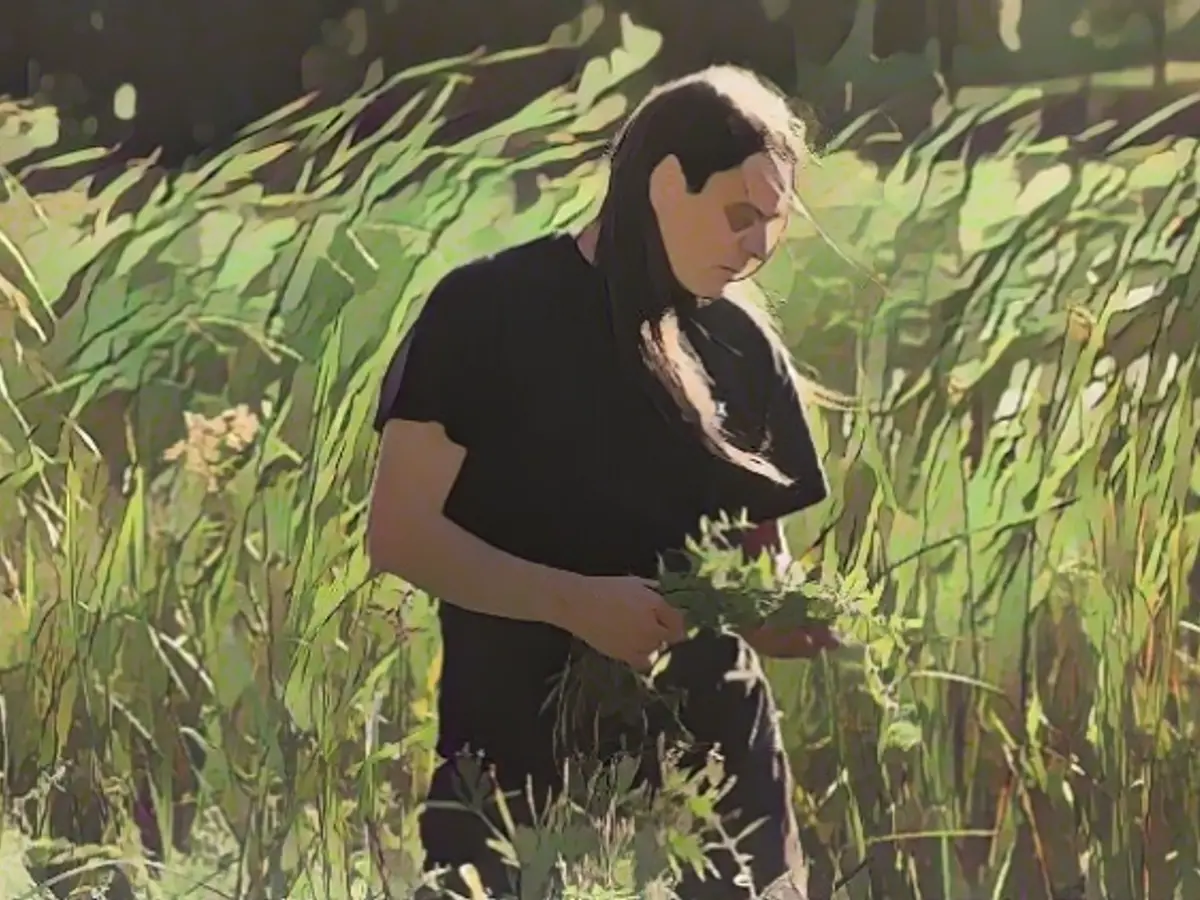What we can learn from the indigenous people
Sean Sherman grew up on a Sioux reservation in South Dakota, became a chef and realized: The culinary knowledge of his ancestors is almost forgotten. Sherman has brought it back to light. His recipes read like contemporary organic cuisine and strike a chord with us.
For me, "Der Sioux-Chef" is one of the most important books published this year. The Berlin-based publisher Kanon Verlag has not only published its first cookbook, but has also brought the first indigenous cookbook of its kind onto our market. The author is Sean Sherman, an Oglala-Lakota from the Sioux ethnic group. Anyone who wants to know more about the way of life of the Native Americans beyond the historically limited knowledge of James Fenimore Cooper, Karl May & Co. and, above all, about indigenous cuisine, will find what they are looking for here.
Sherman's aim is to return to simple preparations, original ingredients and local foods with characteristic, fresh flavors. And in doing so, he strikes a chord with us. "How can it be that our original indigenous food is not trending everywhere today and is all the rage?" Sherman rightly asks. "It's hyper-local, ultra-seasonal, mega-healthy: no processed foods, no sugar, no wheat (or gluten), no dairy or high cholesterol animal products. It is naturally low-glycemic, high in protein, low in salt, predominantly plant-based, with lots of grains, seeds and nuts. But above all, it is more than delicious. It offers what so many diets want to provide, but lack due to a lack of purpose. It's a way of eating that connects us all as directly and profoundly as possible with nature and with each other." This is Sherman's philosophy: a cuisine of deep connection with nature, respect for plants and animals.
Alternatives make cooking easier

His recipes are intended as a guide, not as a fixed rule, open to your own interpretation: "Please try out what you like; trust yourself and substitute ingredients depending on what is in season and growing near your kitchen. There are alternative suggestions for ingredients in many recipes." After clarifying what belongs in the indigenous pantry, including several basic recipes, Sherman takes us to the fields and the garden (light fare), to prairies and lakes (heartier main courses). Of course, there are also sweets from nature as well as various celebrations and feasts. The dishes in this book are gluten-, lactose- and sugar-free. They include sunflower butter (without butter), wild herb pesto, smoked fish cream, roast duck with sage and rosehip or baked pumpkin with a maple syrup crust and blueberries. Don't be afraid of unfamiliar ingredients and cooking habits: The 126 recipes are easy to cook, at least most of them. It doesn't have to be pemmican - but if you've always wanted to know how it's done, you'll find help here. If you prefer your Christmas duck smoked, you can do that too with the help of Sherman. All you have to do is bring your smoker out of hibernation.
Most of the ingredients listed in the recipes can be found in supermarkets and organic stores, and the author also provides advice on all possible alternatives. For example, if you don't have bison to hand, pasture-raised beef will do. My tip: However, if you value authenticity, you can get bison from the southern Harz region in Saxony-Anhalt. Bison also graze just outside Berlin, in Teltow in Brandenburg. We can't do everything Sherman recommends in our everyday lives. We can't just rush off to work by bike, public transport or car to collect herbs on our doorstep. Enviable if you live and work in the countryside and have such opportunities. In the high-rise metropolitan areas, we have to find other options and resort to Sunday walks or buying wild garlic and mushrooms at markets.
Sad legacy continues to this day

Sean Sherman, born in 1974, grew up on the Pine Ridge Reservation in South Dakota. The reservation became sadly famous when, on December 29, 1890, members of the 7th US Cavalry Regiment murdered 300 defenceless members of various Sioux tribes - a massacre that went down in history as the Wounded Knee Massacre. And today? Today, the Pine Ridge reservation is one of the poorest regions in the USA: well over half of the indigenous people live below the poverty line and the unemployment rate is 80 percent or more. This is compounded by an incredibly unhealthy diet since the colonizers stole the tribes' land and resources 150 years ago, driving them from their ancestral habitats. "Uprooted and relocated to reservations, they were deprived of control over how they wanted to feed themselves and were forced to rely on products supplied by the government: Canned meat, white flour and lard - all foods with poor nutritional value. Food control is also a means of exercising power." Sad words, sad truth - and still far from the world.
All of this still has an impact today: members of the First Nation suffer from diabetes twice as often as the average American. High blood pressure, heart disease, mental health problems, alcohol and drug addiction are widespread. The life expectancy of Native Americans is 20 years shorter than that of whites.
Beginning of a culinary and cultural renewal

On his grandfather's ranch, Sherman was not born into the position of an internationally recognized top chef and entrepreneur. He learned to hunt and identify plants at an early age. At 13, he started wiping tables and washing plates in restaurants, but he wanted more and learned quickly. He made up for his lack of training with experience, a thirst for knowledge and perseverance. At 27, he was a chef, but at 29 he paid a high price for this early success: burnout. Sherman took some time out and went to Mexico. In the impassable Mexican jungle with the reclusive Huichol people, where indigenous food traditions have largely been preserved, he realized what a "driving force, identity and structure" food is in life. Sherman wanted to know what his own culinary heritage consisted of.
Back in the USA, he began a journey to these roots. His vision to bring the glaringly underrepresented Native American cuisine back to light in the United States took shape in 2014. Sherman founded The Sioux Chef, a food and catering company, as well as the non-profit organization NATIFS (North American Traditional Indigenous Food Systems). Lectures, training courses, courses, pop-up dinners, food trucks, restaurants ... Sherman's significance has long since extended beyond his home country. The many honors show: The work has paid off. Sherman's Owamni restaurant in Minneapolis was voted the best newcomer restaurant in the USA in 2022, one year after opening. The cookbook, which is now available in German and was published in the USA in 2017, received the award for best American cookbook in 2018. In 2023, Time magazine named Sherman one of the 100 most influential people in the world.

There are now many chefs like Sherman, many activists who are campaigning for a return to the culinary traditions of the ancestors and who are carefully adapting this cuisine to the requirements of the present. Such efforts can be found from Canada to Peru, and the new cuisine of the North in Europe is also part of this. We in Germany also want to live more sustainably - our food should be regional and seasonal. The indigenous people have long since shown us how to do this and have been doing so for centuries - if they have not been prevented from doing so by external influences. A study by the Food and Agriculture Organization of the United Nations (FAO) came to the conclusion that indigenous peoples protect and enrich their environment with their way of procuring food. This approach to food should be included in the transition to more sustainable food systems.
Because the development of indigenous food is so important, "The Sioux Chef" also features many other advocates and their recipes. Sean Sherman's dedication reads: "This cookbook is dedicated to our ancestors and all Indigenous people who have suffered for centuries under colonialism. We, the descendants of the First Nation, are living proof of bravery and resilience. We offer our work to the next generation so that they can carry the flame of knowledge and keep our traditions, diet and medicine alive for future generations."
Seared duck breast with apple juice glacé
In this recipe, the duck breast is cooked very briefly and seared with a dash of maple syrup. It's a simple dish that makes a fantastic main course. If you don't hunt yourself or know someone who does, and fresh game birds are not commercially available in your area, use frozen duck breast from the supermarket. Searing at a high temperature makes the skin nice and crispy. Serve the duck breast on corn pancakes (page 51) or on wild rice pilaf (page 84).
Preparation:
Mix the salt, sumac and juniper in a large sealable plastic bag and then add the duck breast. Shake everything so that the meat is covered all over with the spice mixture. Seal the bag and place it in the fridge for at least 1 hour or overnight.
Take the bag with the duck breast out of the fridge and wait until it is at room temperature.
Preheat the oven to 200 degrees. Pour oil into an ovenproof frying pan so that the bottom is generously covered and heat over a medium heat until the oil is easy to swirl. Place the duck breasts in the pan one by one or in small portions, skin side down, and sear for about 5 minutes. Then turn and sear the other side for 5 minutes. Place the pan in the oven and cook the meat for about 5 to 7 minutes until it is pink on the inside. Then cover the duck breast and transfer to a plate to keep warm.

Remove all but 1 tsp of the fat from the pan and set aside for use elsewhere. Reheat the pan over a medium heat, add the apple juice and use it to loosen the brown coating from the bottom of the pan. Stir in the sage. Allow the apple juice to simmer and reduce by half. Now add the vinegar and simmer for a few more minutes.
Then season the sauce with the maple syrup. Cut the duck breast diagonally into 2.5 cm thick slices and serve with a few dabs of wojape sauce.
(Note: Sherman writes about sumac: "The spice sumac can be found on the spice shelf in many supermarkets, organic and delicatessen stores. You can find out how to harvest it yourself on page 45. It can be replaced with lemon juice.")
Wojape
The aroma of this traditional sauce simmering on the stove takes me back to the carefree age of six. The weeping cherries I collected in our neighborhood as a child were a staple in our family. We would lay out a blanket under the trees and collect them by the bucketful. You don't have to pit them because the stones sink to the bottom of the pot on their own as the sap oozes out and the sauce slowly thickens. If we wanted to use the sauce for desserts, it was sweetened, but it can also be used as a tangy sauce for meat, especially game, and vegetables, as well as a dressing.
Preparation:
Place the berries in a saucepan with the water and bring to a slow boil over a low heat. Allow the mixture to simmer, stirring occasionally, until it thickens and then sweeten the sauce with honey or maple syrup to taste.
Heidi Driesner wishes you good luck with your learning and cooking.
Read also:
- Snow chaos further restricts Bavaria
- Unanimous decision: faster wolf culls possible
- The year of climate records: extreme is the new normal
- Snow and ice paralyze southern Germany
In his cookbook, Sean Sherman emphasizes the use of original indigenous ingredients and local foods, highlighting the health benefits of this diet. He suggests substituting certain ingredients, such as using pasture-raised beef instead of bison if it's not available. (Reference to 'Nutrition', 'Food')
Furthermore, this traditional indigenous cuisine has a deep connection with nature and respect for plants and animals. Sean Sherman, in his culinary journey, has brought forgotten culinary knowledge of indigenous peoples back to light, resonating with contemporary organic cuisine. (Reference to 'Indigenous peoples', 'Food')
Source: www.ntv.de






